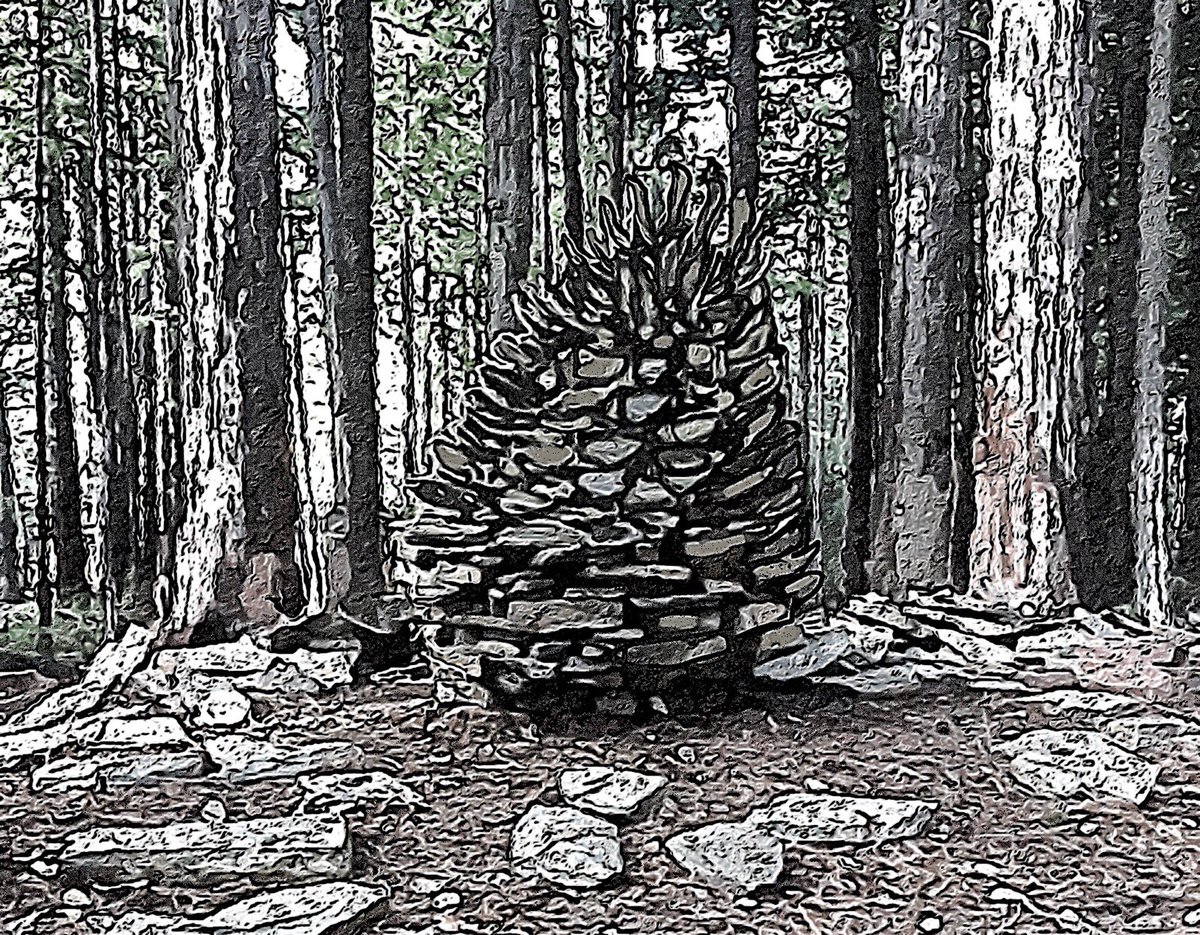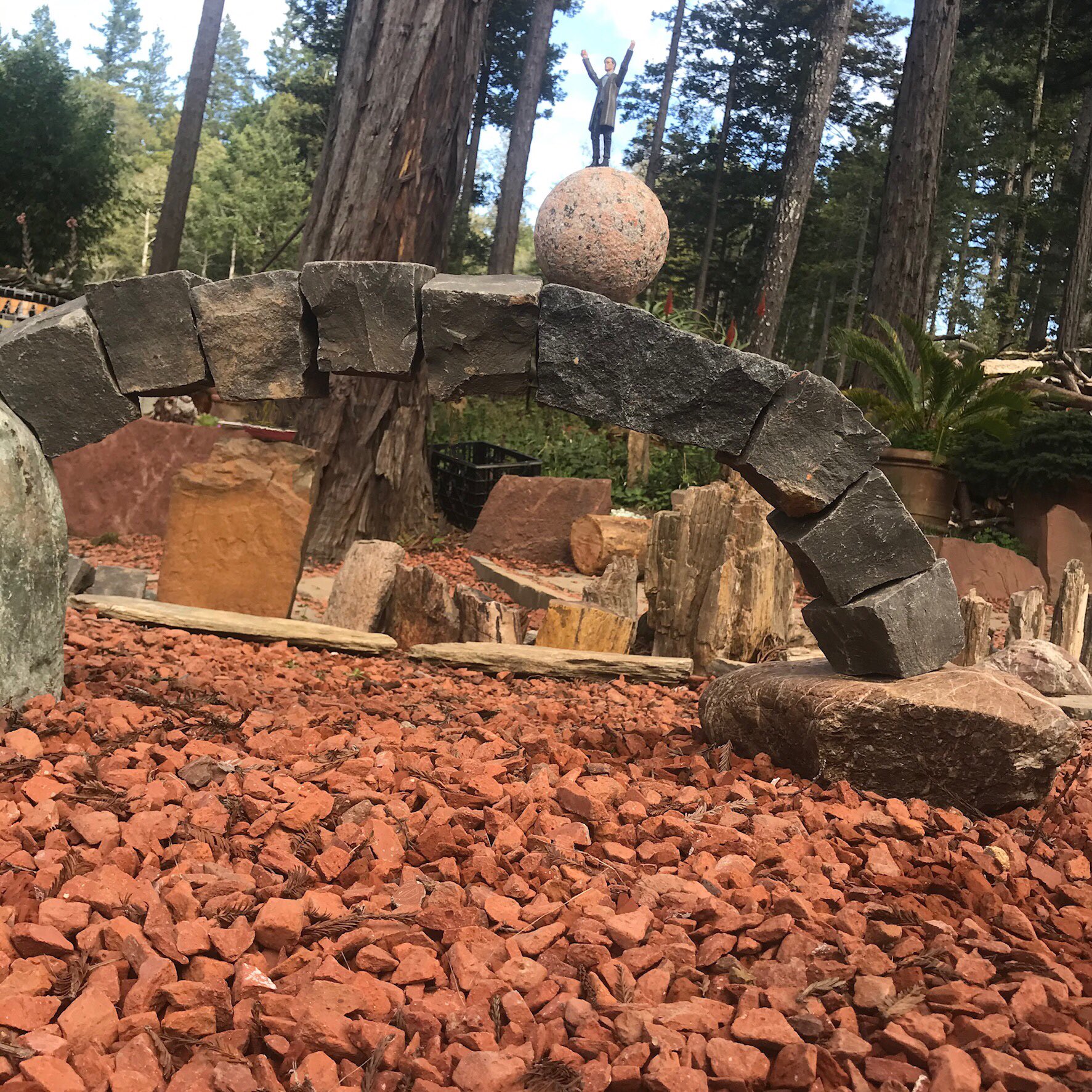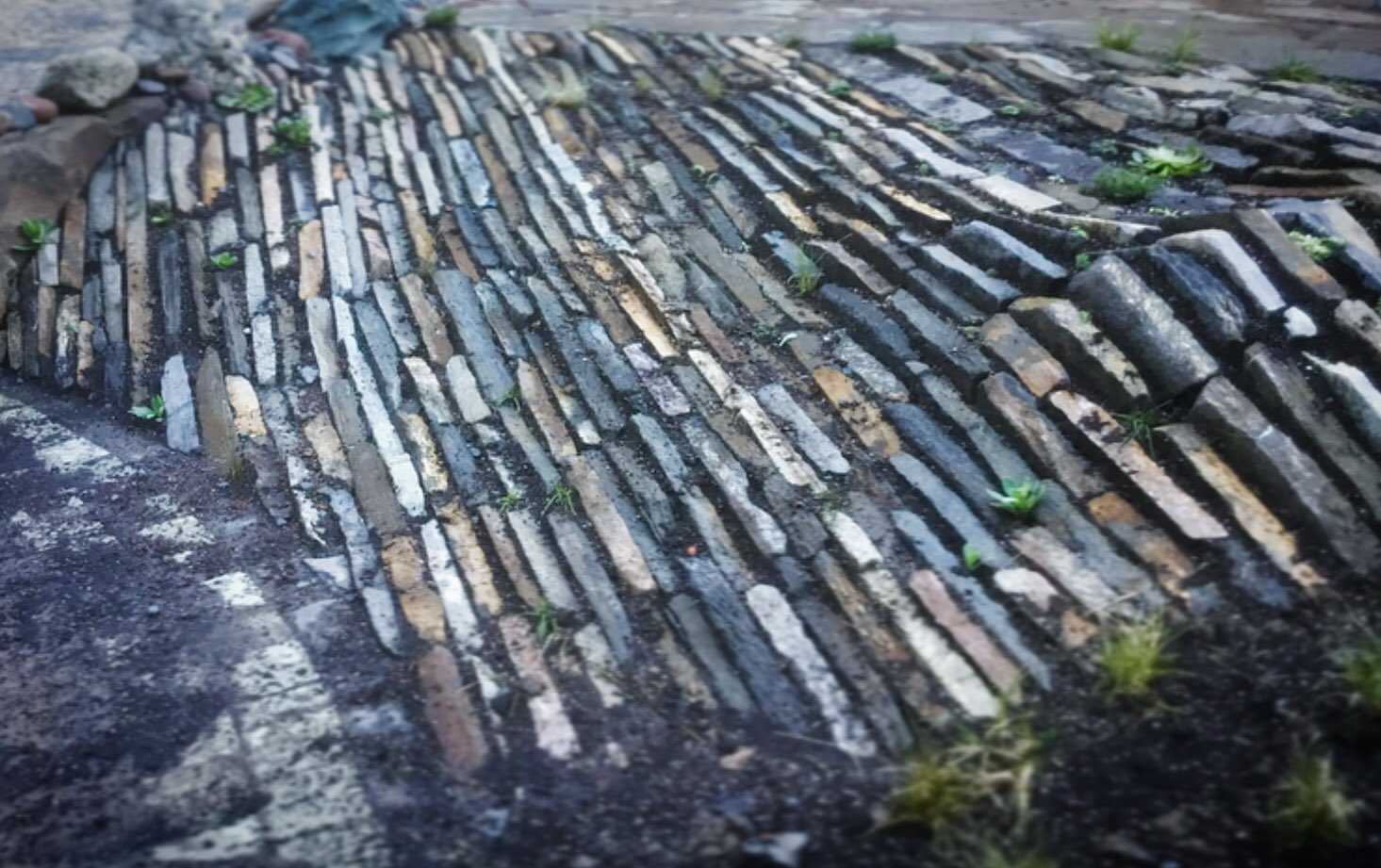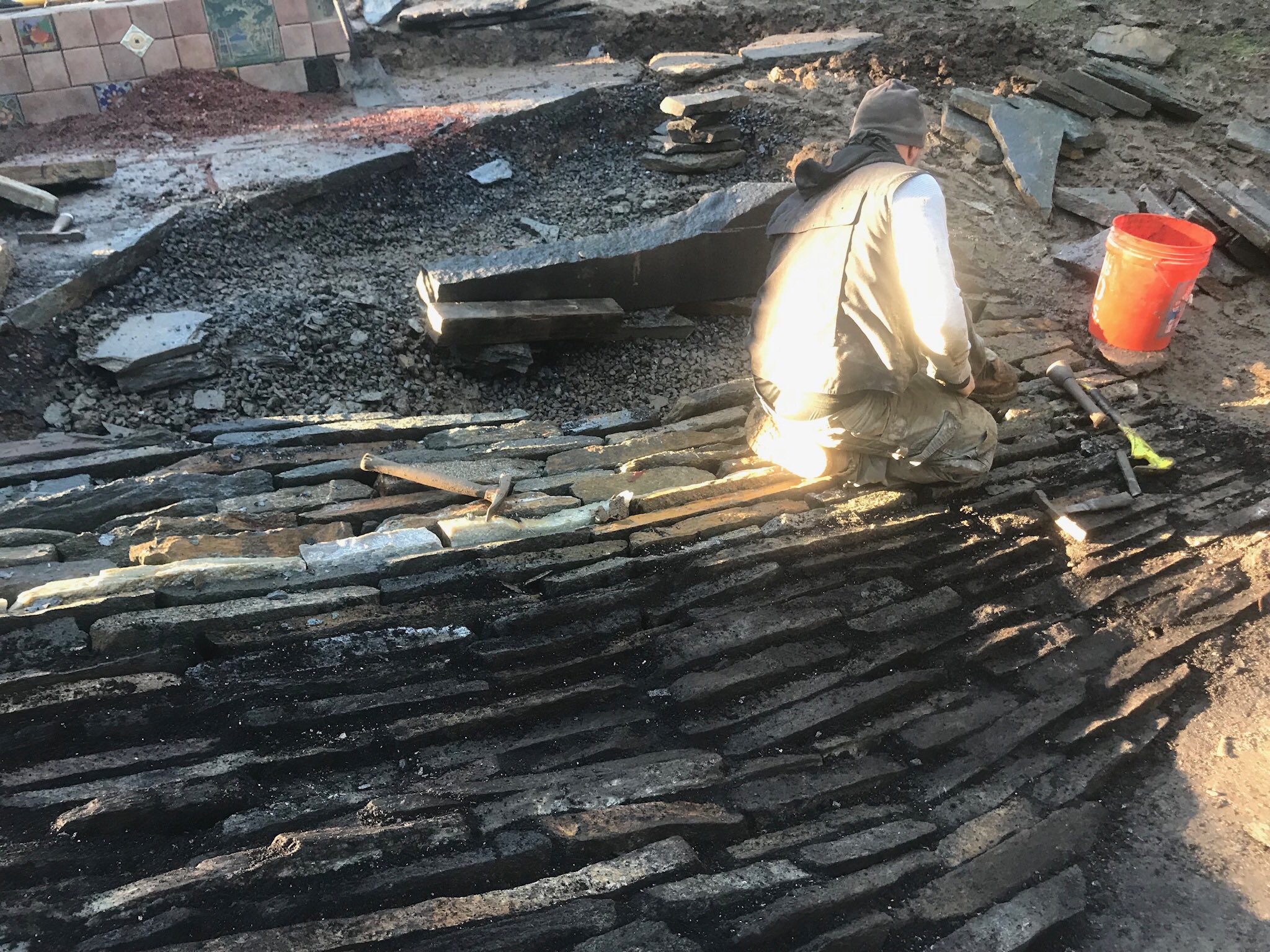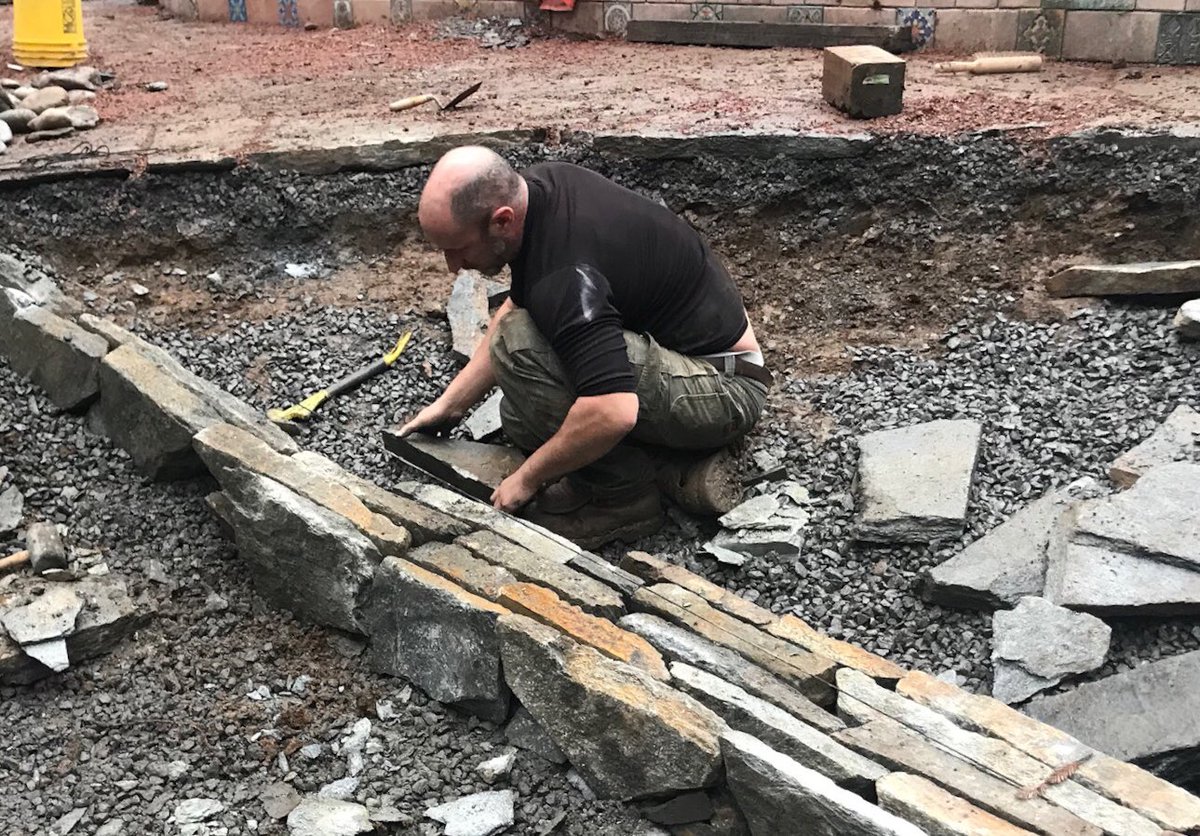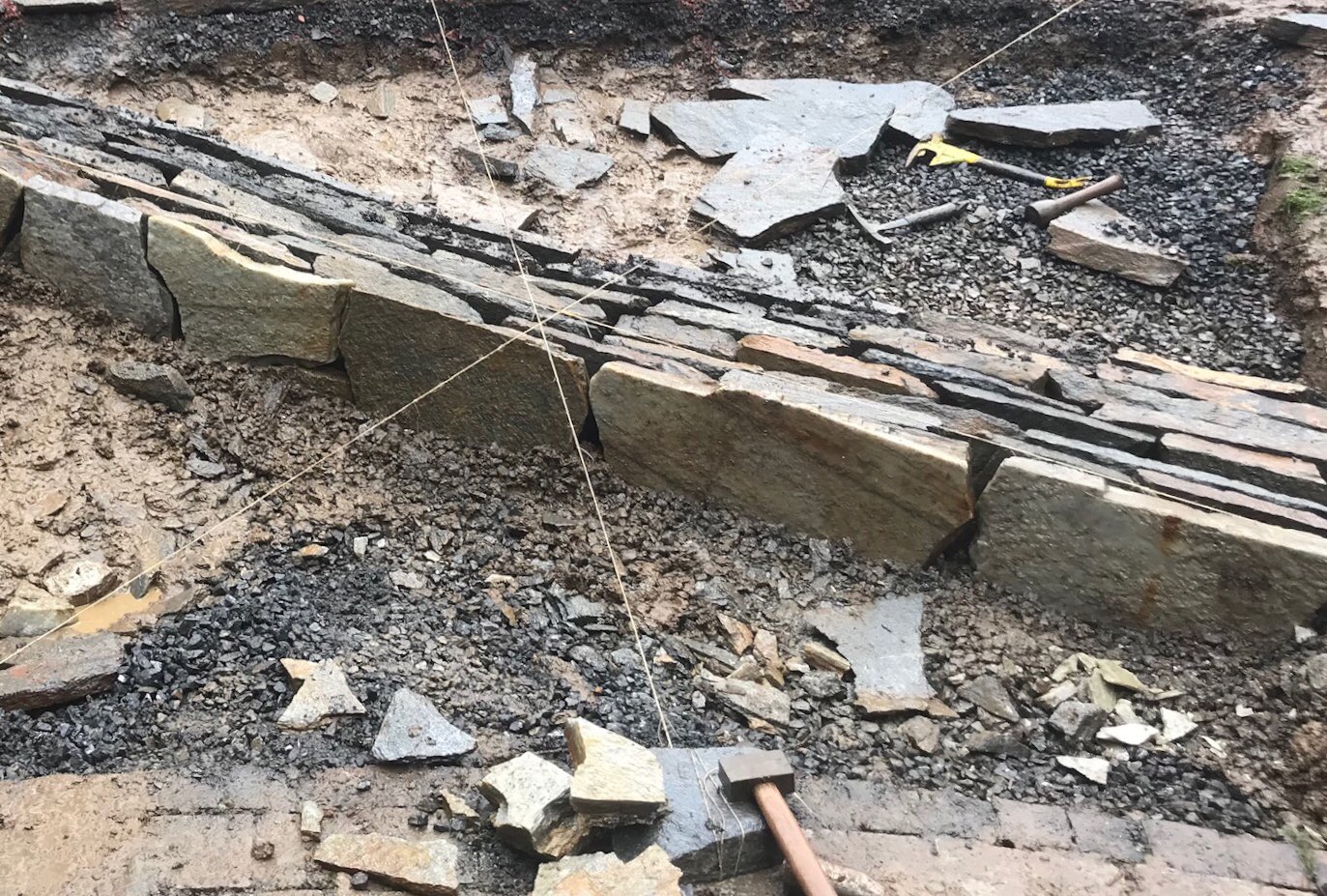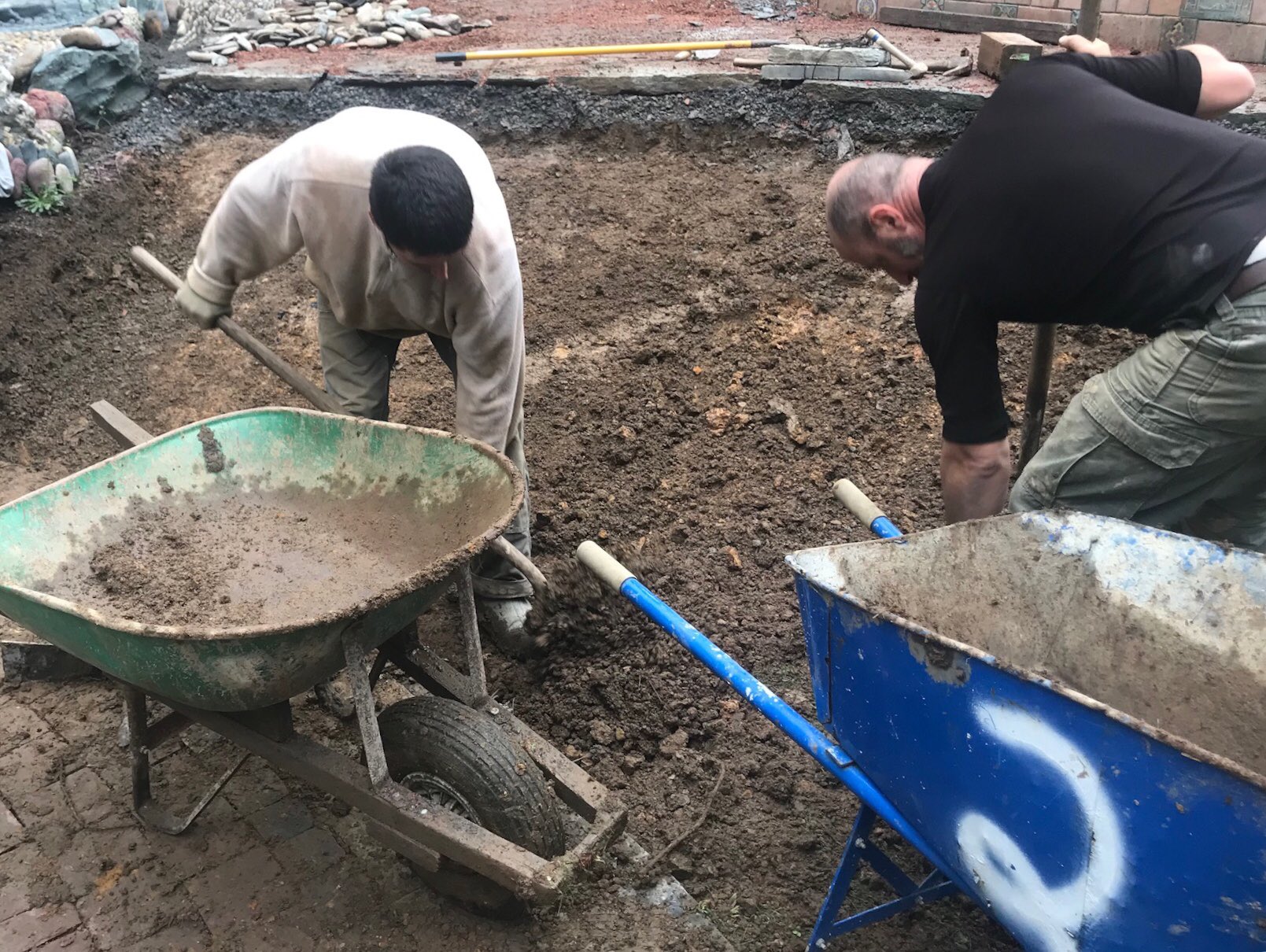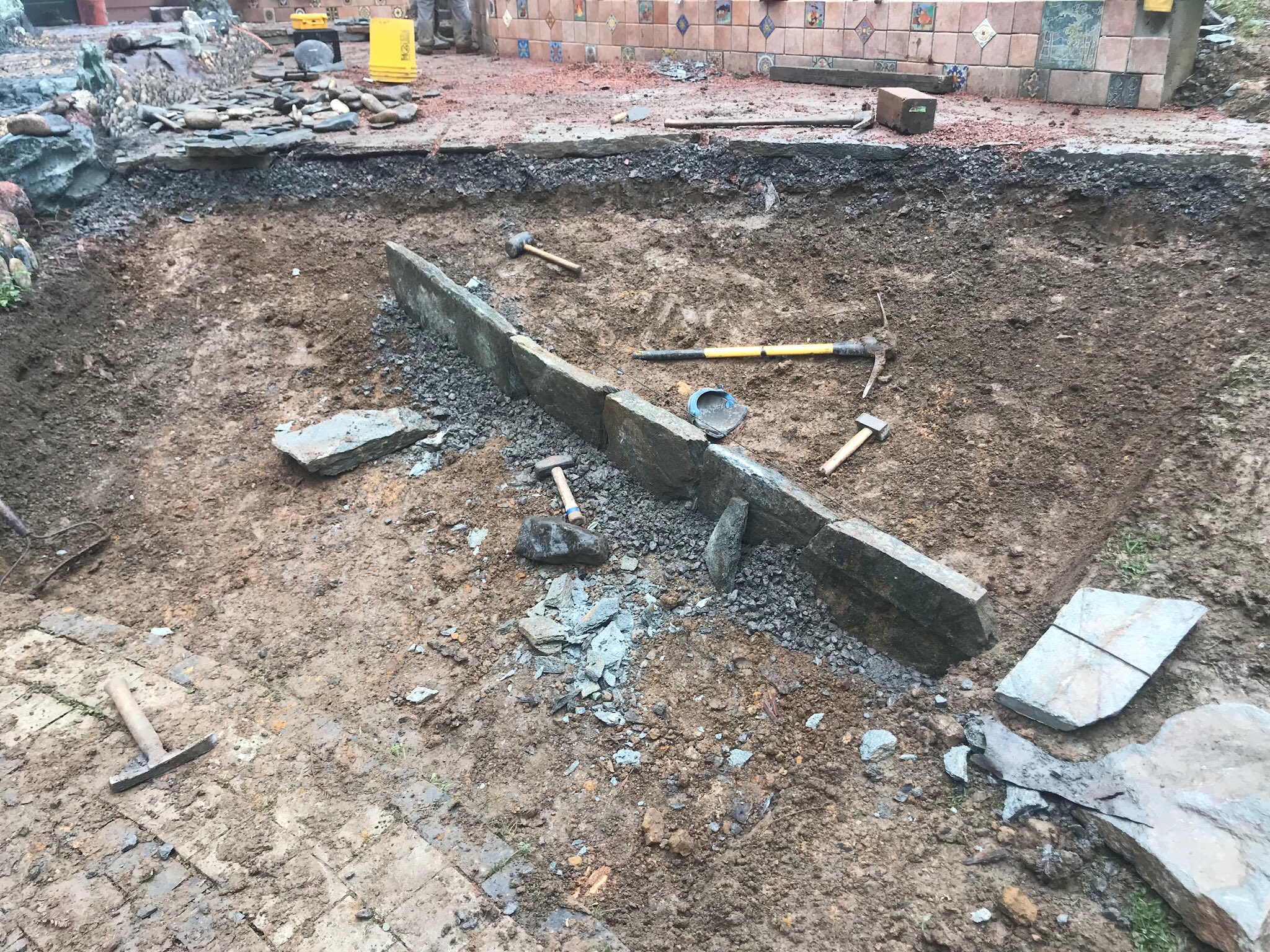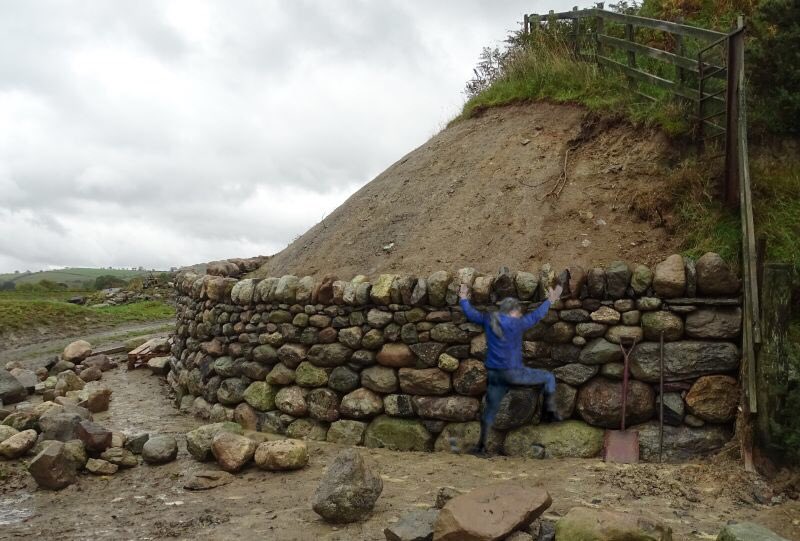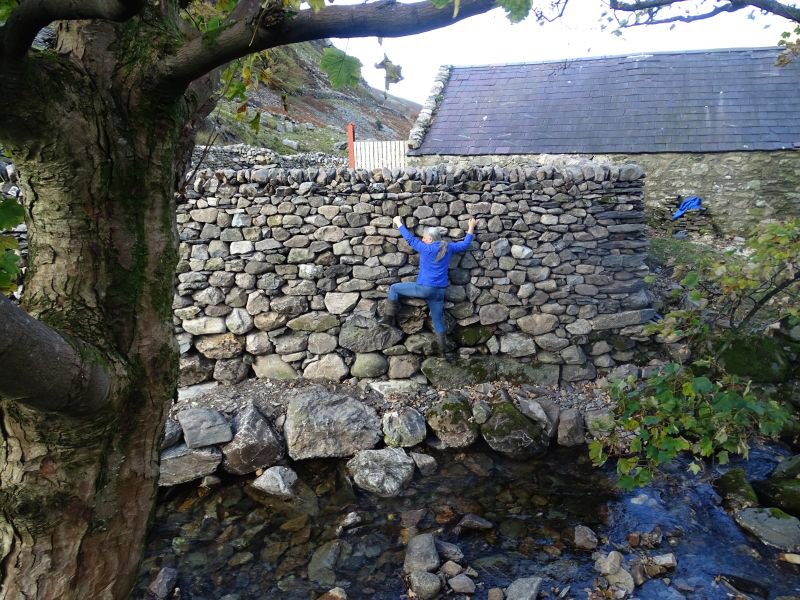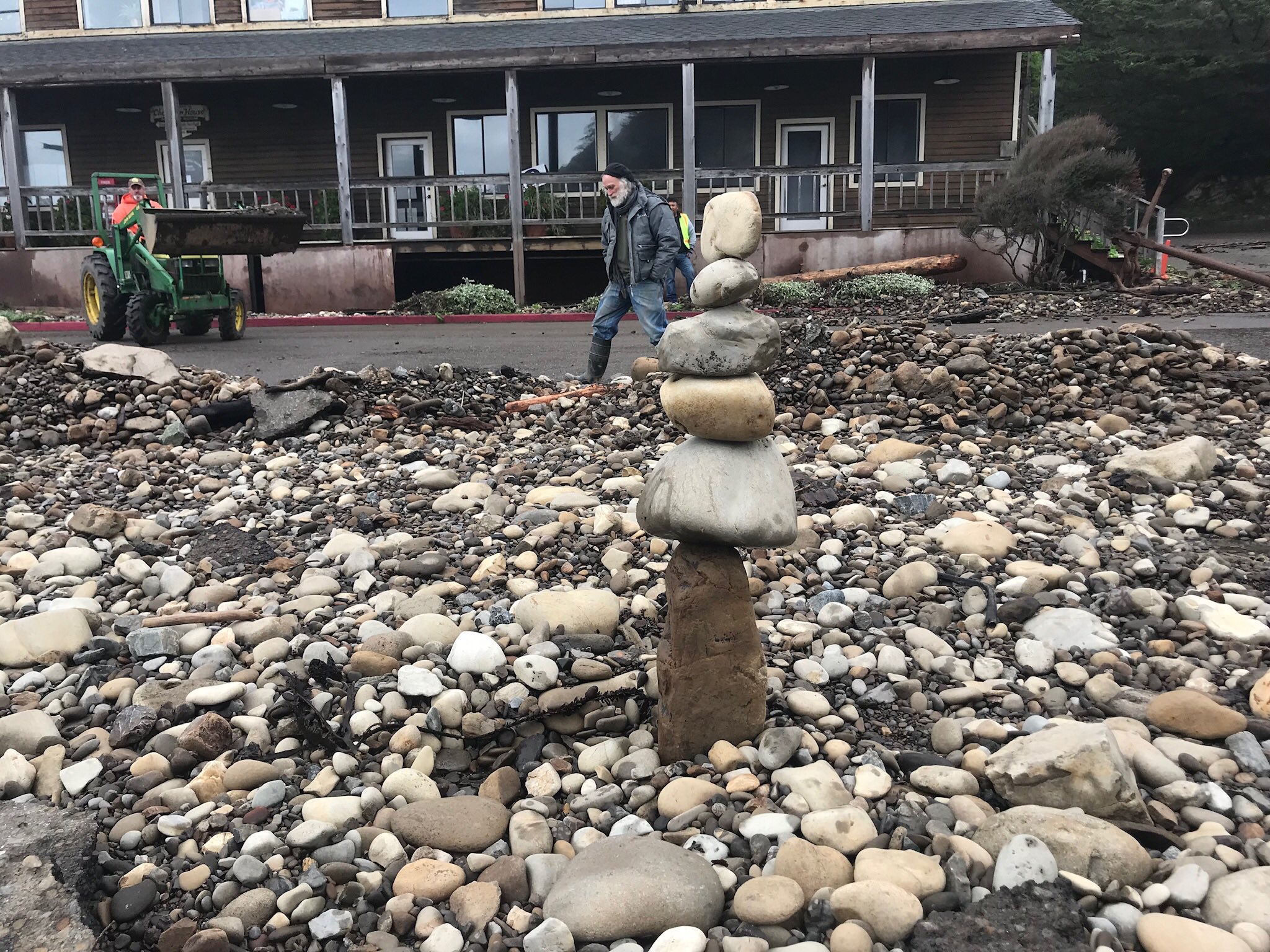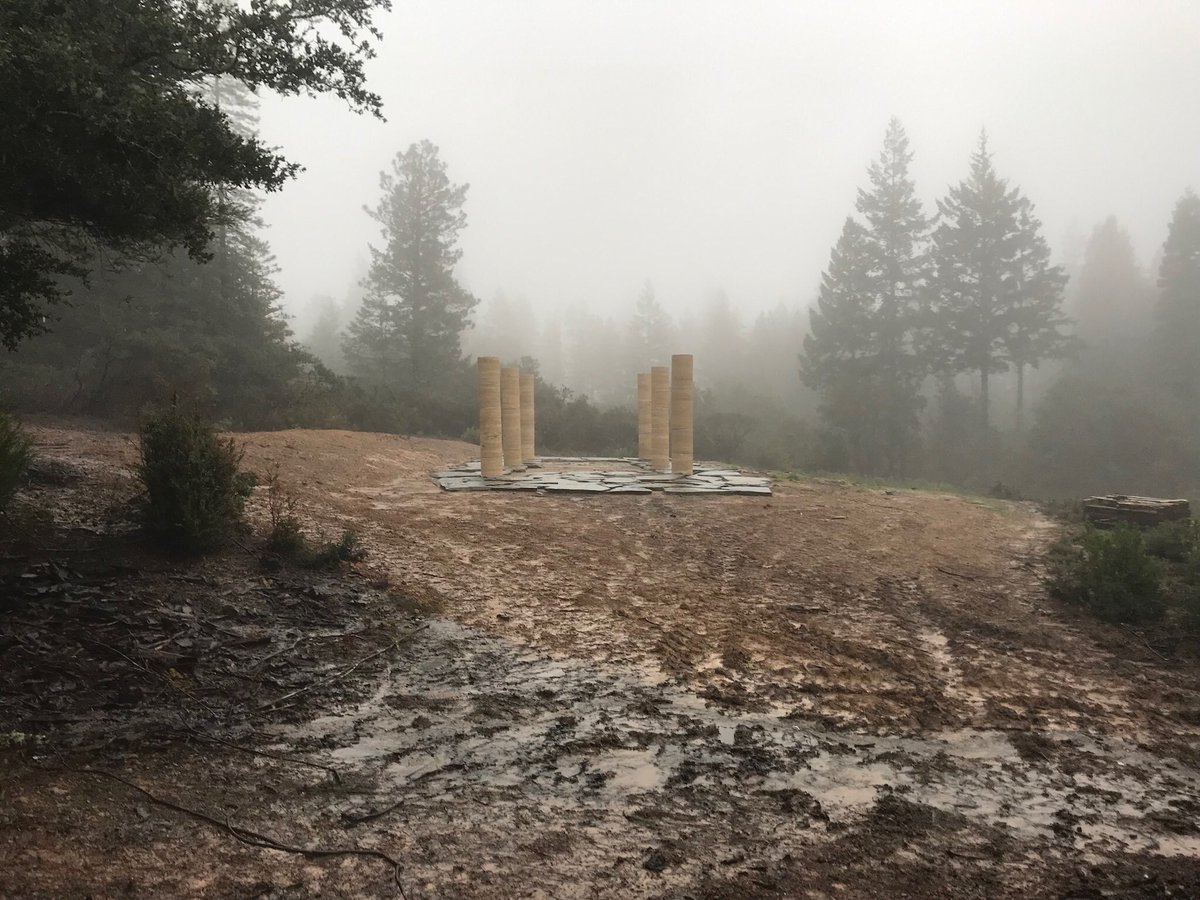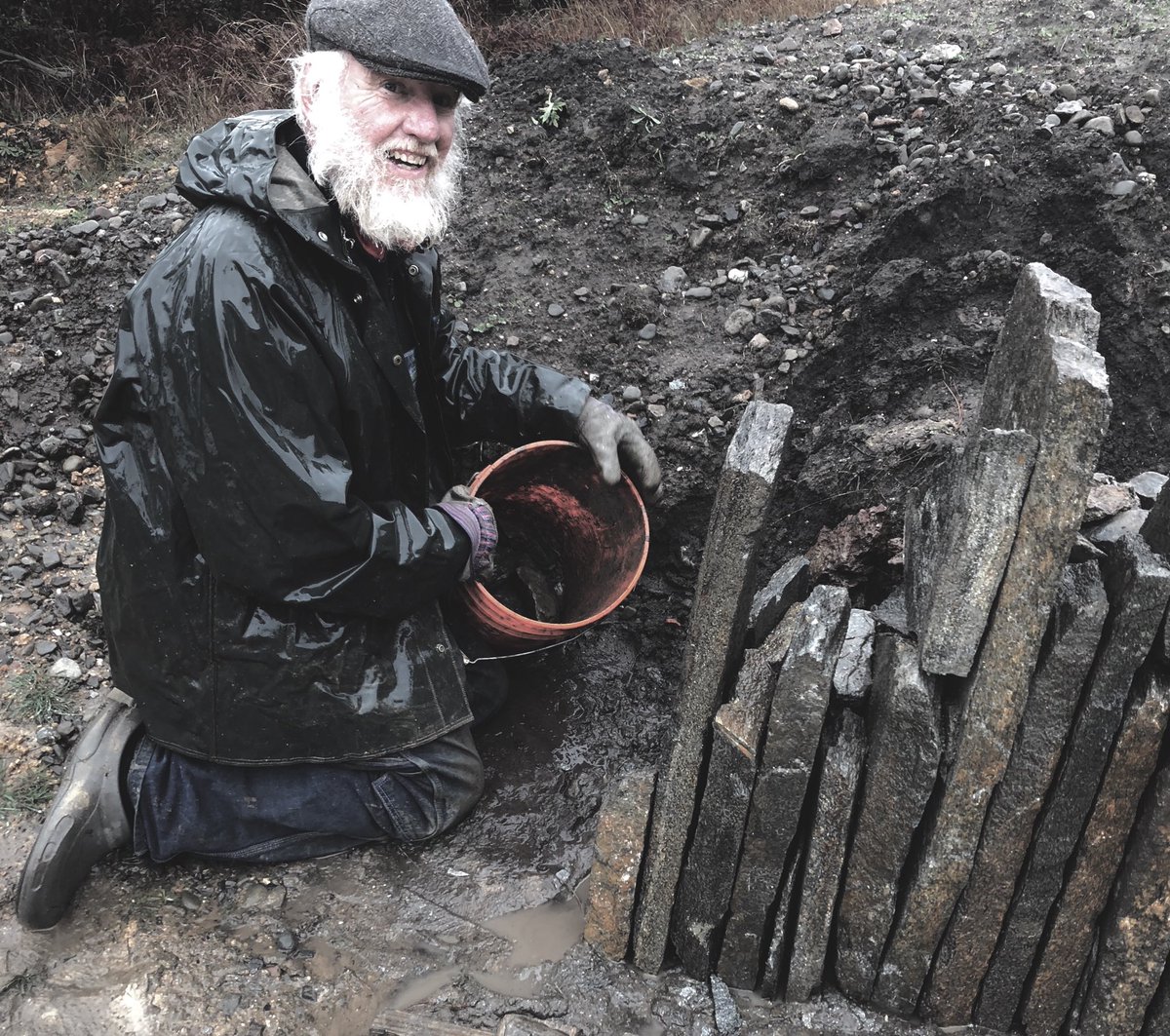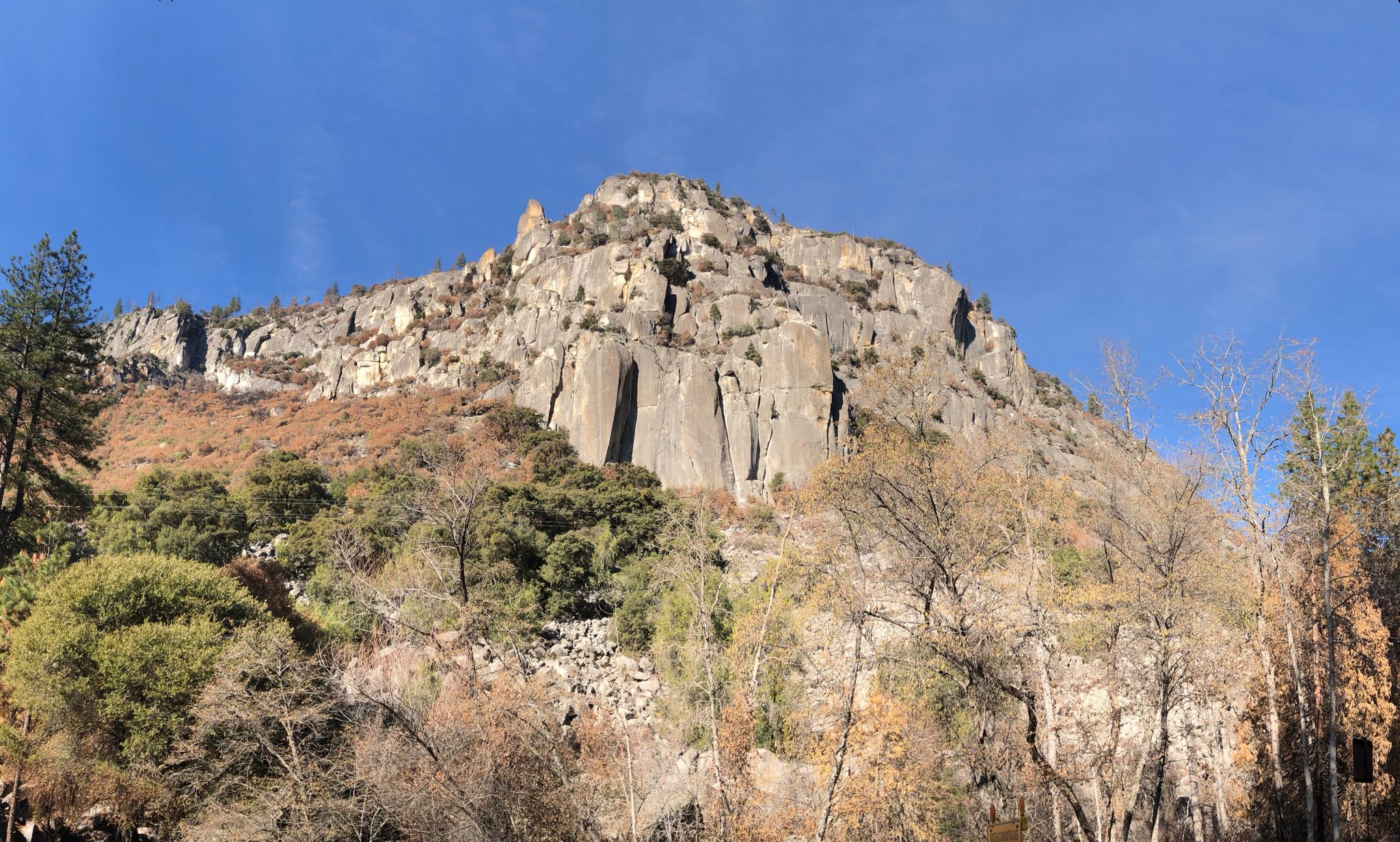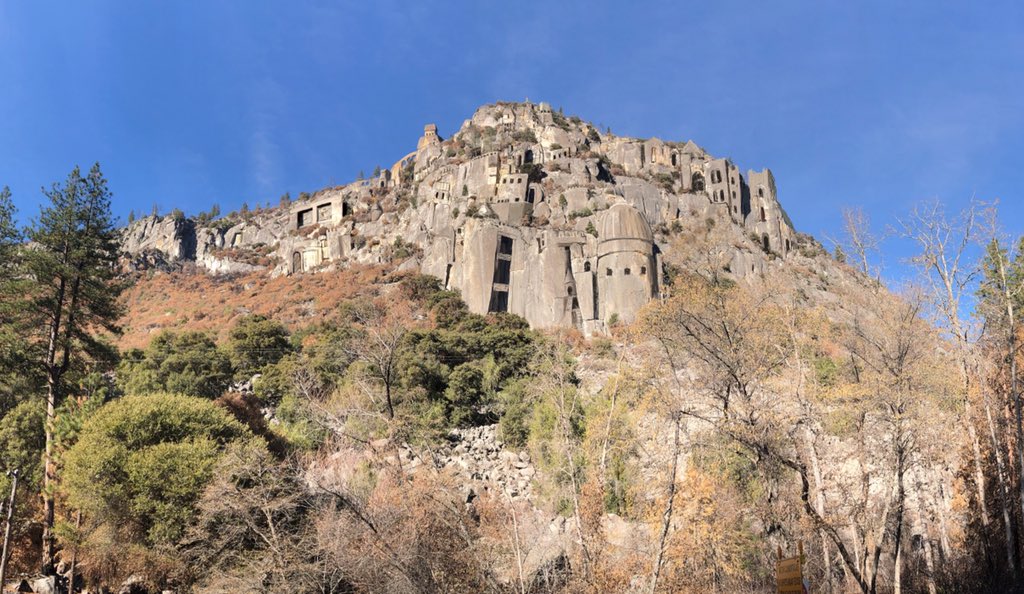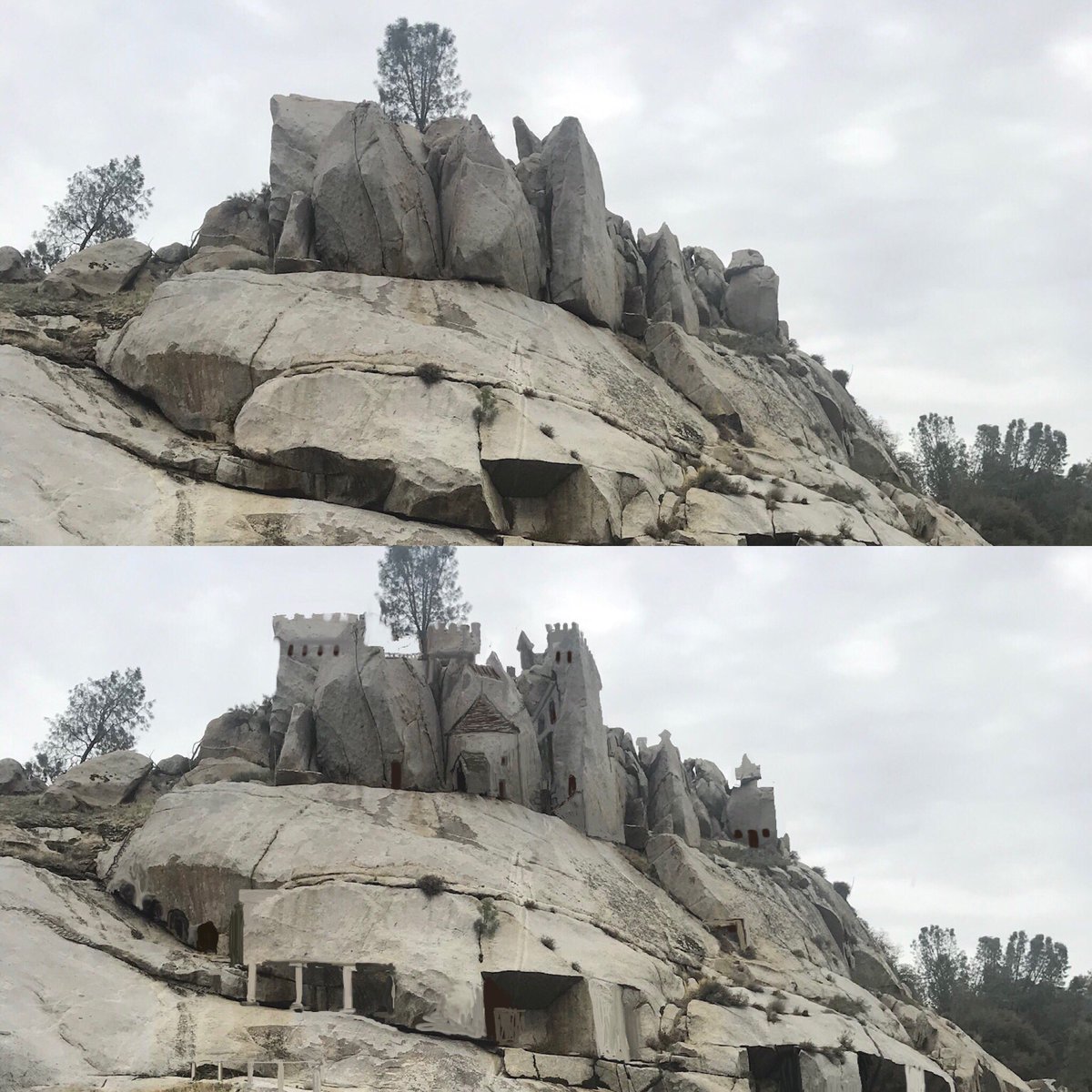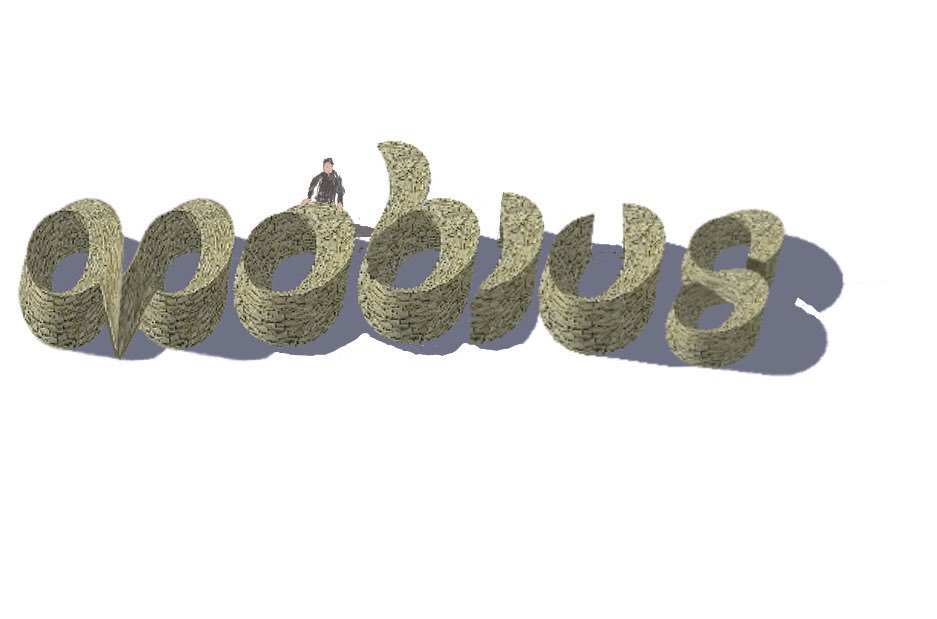Thursday, January 31, 2019
Wednesday, January 30, 2019
Monday, January 28, 2019
Saturday, January 26, 2019
Friday, January 25, 2019
Thursday, January 24, 2019
Wednesday, January 23, 2019
Crevice Garden preparations
Work began last week on the new crevice garden.
The prep work involved mostly digging in the mud removing twelve inches of soil.
The first row of lags are laid upright in a diagonal row across he middle of the space. The line of the tops of the flagstones determines the general swoop of the topography from upper patio thu the middle to the lower walk.
The beauty of the crevice garden is that it is beautiful AND does away with the need for a conventional terrace wall, while still retaining the slope and grade of the hill. The stones in the crevice garden create a gentle rolling slope, something you can walk down rather than step off and fall over.
Tuesday, January 22, 2019
The tallest of the three
The most recent job Sean Adcock built was a third tall wall, this time a garden wall in Beddgelert, North Wales.
About 8 feet high (8-10 inches buried),this wall made of slatey material had lots of tracing in the bottom half especially. The throughs were put in at approximately 24 and 42 and 60 inches, all laid 36 inches apart. The batter was about 1:8 ( Sean usually does 1-6) becaue the wall needed to be around 16 inches at top for coping. A seven foot wall (before copes) would have had to have nearly 4 feet of base At 1-8 batter, only a three foot wide base is needed.
The reasons a wider base was not thought to be a good idea were many, including the fact that the original wall was 3 foot narrow presumably allowing more garden room.
In the end the owner, a builder suggested he lay a 3 foot concrete slab footing for the wall (the appropriateness of which is an argument for another day perhaps).
Monday, January 21, 2019
Tallish Wall
Ruthin wall, in North Wales, was built last year end of September 2018. It’s worth taking a long look at this wall. Single skin retaining wall, most of the stones in lower half are 2-3 foot into bank. The footings and end were done with machine but all the rest wrangled into place by hand. Sean says, maneuvering a big stone up to the wall is often harder than putting it into the wall.
This magnificent wall is just over 6 feet, including coping.
“Nothing hugely special”, says Adcock, “taller than I normally get to buid , built just before the Blaen y nant wall. It’s my favourite type of stone for building, slightly rounded glacial bouldres/fieldstone, and of many, the only one I am reasonably happy with (bearing in mind I am never happy).”
Sunday, January 20, 2019
Tall Wall
Sean Adcock did this major repair to an agricultural wall in Blane y Nant,Wales, last year. It’s a sheep pen, partly retaining (about four feet)and the rest just under six feet tall of free standing wall, (on the uphill side). Where Brenda is climbing it is nearer eleven or twelve feet.
Sean says he dug out below stream level and wrestled into the base a row of massive boulders each weighing a ton or more then immediately behind these a row of slightly smaller stones were set as the footing for the wall. The first two courses were all stones that were too big to be moved by hand ( track excavator was used) This more or less brought the wall to ground level.
The wall was a little under 4 feet wide at ground level and from this point was built almost entirely from the uphill side! Battered 1:6 it is around 24 inches wide below cope. The cope is formed by an irregular cover with a rubble cope on top. There are no throughs .
“The stone was plenty big enough anyway,” says Sean, “ ie at through stone height it was around 3 feet wide and the building stones still met/overlapped in the centre of the wall”
Sean remembers it was horrible stone with “all sorts of silly shapes”
This Property used to be Sean’s main site with over 70.000 square feet of wall face surface rebuilt here over fifteen years, now just occasional repairs and projects.
Saturday, January 19, 2019
The Ocean’s Bounty
This windfall of rocks, stones and beach pebbles was tossed up onto the parking lot at Point Arena in the big storm last Wednesday. Some of us were there yesterday helping clean up by gathering a carefully hand-picked selection of this beautiful material to be used in future installations back at the Stonezone. And, of course, we had to leave one or two stones balanced, as a thank you to the sea.
Thursday, January 17, 2019
Wednesday, January 16, 2019
Sunday, January 13, 2019
Saturday, January 12, 2019
Friday, January 11, 2019
Time is an Element
The Squire (the squarish granite rock), having told the other rocks how he had ended up meeting the beautiful round stone Rhonda, when he had been first washed up on the beach at St Bees Head, continued to tell the story of how their friendship slowly evolved.
At first they gave each other a lot of time. They learned to appreciate each other's various facets. The main thing that they had going for them was the fact that they were both fairly elderly. It was an important part of their makeup. Being many million years old enabled them to have perspective, and not feel they had to rush into anything. The fact that they were both 'mature' was one of the essential elements to their 'getting along, as essential as oxygen and silicon, the other two most common elements contained in rocks.
Thursday, January 10, 2019
Stone Love

Having been asked how he and Rhonda (the roundish stone ) had met, the Squire, (the squarish stone) launched off on an epic tale about their romantic past.
"Many many years back, Rhonda left the glacier and eventually ended up living on the west coast of what was not yet England, not far from what was to become town of St Bees. She spent all her days on the beach sunning herself, listening to rock and roll ( the sounds of tumbling stones and smaller pebbles being rocked back and forth by the ocean waves) and enjoying the constant changing of the seasons.
Years passed and much of the surrounding coastline eroded away - in one area exposing the high red sandstone cliffs now known as St Bees Head. Rhonda had been fortunate enough to keep her place on the coast though many other rocks living closer to the ocean had come and gone."
"Finally," he said "some time after that, humans came on to the scene. They gradually moved into the area."
The Squire was guessing, about 3000 years ago. "That's right, isn't it, Rhonda?"
"You're telling story dear, I'm going to stay out of it."
"Well anyway from that time on, from what I gather," said the Squire, "Rhonda didn't have a dull moment. She was often picked up, sometimes two or three times a day by various strangers passing by along the beach."
"I never minded the attention." Rhonda added.
"Many years passed, and Rhonda enjoyed the reputation of being one of the oldest residents along that part of the coast"
"But go on, tell the story about the big storm."
"Yes well," returned the Squire, " here is where I come into the picture. Some time later, I'd say back about 175 years ago, while I was sailing from North America in the hold along with a lot of other granite ballast, we strayed from our course and ended up running aground not far from Whitehaven. Running aground was tough break for the ship and the crew, but it was a nice break for us. I spent a good few years enjoying a long relaxing ocean-bed holiday."
"The storm, dear."
He paused again, looked at the rain and then launched into her favorite part of the story.
"At the turn of the century a very big storm blew in off Iceland. There were huge great breakers the size of small mountains, smashing into the shore. It churned the coastline waters up so violently many of us were washed up onto the beach."
"We ended up meeting and falling in love."
"I believe you wanted me to tell the story dear?"
The Squire went on "I had been cast up onto the briny shore only to find myself lying beside the most beautiful piece of rounded granite I had ever seen in my life. "
"You were quite a hunk yourself"
"I knew it was going to be the start of a lovely long 'rocky relationship'. Oh, It was quite 'Tectonic' at first, of course . We discussed how far the continental drift had strayed, and how the earth's lithospheric crust was made.
They both sighed and looked at each other adoringly.
"We talked of many things," Squire mused as Rhonda gazed off dreamily into the hills.
"Of shale and schist, and sealing cracks
And amethyst and slates
And why debris forms mountain scree
And why the earth has plates
We spoke of sub-atomic mass
Of particles and strings,
Of quantum leaps and isotopes
And earth's magnetic rings."
The Squire stopped and took a breath. "Things started to develop fairly quickly after that."
To be continued
Wednesday, January 9, 2019
Tuesday, January 8, 2019
Monday, January 7, 2019
Blind Folded

You can't stop that special stone from seeing. You can try to blindfold it but it still sees everything. And it still looks at you in that all knowing stone-like kind of way. It doesn't have to say anything.
You can try to pretend you don't see it. Or rather, ignore the feeling that you have this sense that you both have some sort of special connection. You can try to imagine you don't need it. And that you can walk past it on the beach.
Or you can think that you can just cast it off into the lake, and be done with it.
Or better yet, bring it home and put it on a shelf, and that will be enough. Maybe write something on it. Draw over it. Maybe just cover it completely with paint?
But in the end it still sees inside of you. It knows you better than you do. Because the connection is there.
Sunday, January 6, 2019
Folded Hands
I close my eyes and fold my hands
My fingers turn to flattened strands
They bend in grooves along each digit
And thus I have no way to fidget
My folded hands, I must confess
Look stranger yet, when more compressed
They buckle in and merge in layers
And thusly poised, I say my prayers
I find my words more concentrated
With hands thus bound and laminated
I know not how to unclasp them
I have no strength to ungrasp them
But when my words have all reached heaven
I thank the Lord, and say 'amen'
For when I open up my eyes
The folds are gone, to my surprise.
Saturday, January 5, 2019
Sheep Folds
There are sheep in the folds
And folds in the sheep.
Pressed
But not oppressed
Safe in snuggly sleep
Fitted sheeps
Tucked into corners
To keep them from
Their sheepish fits.
No wrinkle of danger
No cause to be afraid
Rocks with flocks
Hemmed in at every stage
So as not to in crease their chances of wandering straight off the...
page.
Origami walls and ledges
Neatly wrap the outside edges
From the straights
And from the narrows
The sheep all safe from
Slings and arrows
Folded wooly blanket coziness
Enclosed and fully flanked in stoniness
A shelter from unruly wind and cold
As safe as in the days of old.
origami 'mouton' by Beth Johnson
poem and illustration by me
Thursday, January 3, 2019
Folded Into Itself
The Mobius Strip is an inviting shape to try to use in a dry stone wall design. It is a wall with only one side. It circle/spirals around as it folds into itself. It's a surface that continues becoming the top, the side, the bottom, the side and the top again.
We could be at the top of our game and still really only be at the bottom (the 'game' being our work) if we only built mobius shaped structures.
How would we know?
Like much of life, top and bottom are often the same side of the same thing.
Tuesday, January 1, 2019
The layers keep folding over.
Folds are one of the most common phenomena you can find in geology. A fold is usually produced by plainer layers (usually sedimentary rocks) which are curved by sympathetic efforts. The kind of folding in the photo below is called a Chevron and its main feature is that the angle of hinges is very acute, almost without curvature. The undoctored photo (below) is of a completely natural stone fold formation found in Greece. The image was found on Geologiaaldia's Instagram feed.
Subscribe to:
Comments (Atom)
